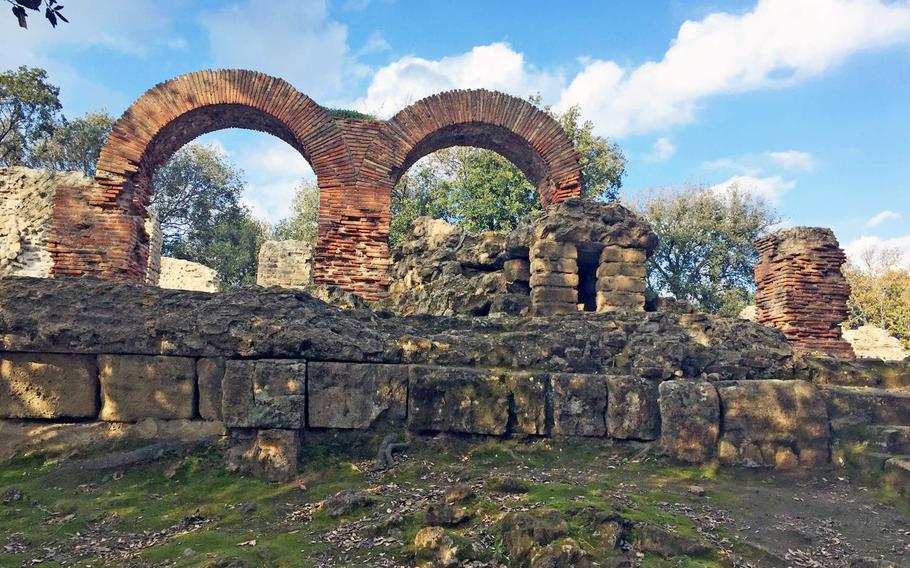
Temple of Zeus remnants at the Cuma archaeological park in Pozzuoli, Italy. Much of the site is linked to the first Greek colony on Italy's mainland in the eighth century B.C. (Scott Wyland/Stars and Stripes)
A serene walk through a wooded, waterfront park will take you through ancient Greek ruins at the Cuma archaeological site west of Naples.
Yes, Greek.
Cumae was the first Greek colony on Italy’s mainland. Records indicate Greeks settled here in the eighth century B.C. and thrived for a few hundred years before Oscan invaders conquered it.
The remains of this once-formidable stronghold lie in the modern village of Cuma. The Greeks left a deep footprint here but were a fleeting power in a region where tribes and nations were constantly warring.
Brick slabs and truncated columns were temples to the Greek gods Zeus and Apollo and later the Roman deities Diana and Jupiter.
A stone wall embedded in a hill was part of the Cumae acropolis. A trapezoidal tunnel passes through the cave of the Sibyl, an oracle who ancient Greeks believed could tell the future.
The hills and battlements, which offer visitors majestic views of the sea, gave armies both a lookout and fortified defense against foes. The Germans used the site as a gun emplacement during World War II.
The temple of Zeus was converted into a church during the early Christian period. These hilltop ruins are marked by brick arches. Any architecture still intact within the parksite is of Christian origin.
Cumae prospered for centuries with its Roman alliance, a factor that helped protect the city against invasions, including from Hannibal. But after Rome fell, the Goths conquered it, then the Saracens, then the Neapolitans. Then nature.
Marshes overtook the city after the Saracens were driven out in the 13th century, and Cuma became almost forgotten. Archaeologists uncovered the ancient ruins in the 1930s, including the cave of the Sibyl.
Walking through that mystical passageway, you wonder whether this ancient seer ever envisioned Cuma as anything like it is today.
wyland.scott@stripes.com Twitter: @wylandstripes
Address: Via Monte di Cuma 3, Pozzuoli, ItalyHours: 9 a.m. to 6:20 p.m. dailyCost: 4 euros ($5)Parking: There are an ample number of spaces along the road and area in front of the park.Other amenities: The are many good restaurants in the area, along with beaches and museums.Information: email: ssba-na@beniculturali.it, phone: (+39) 081-804-0430